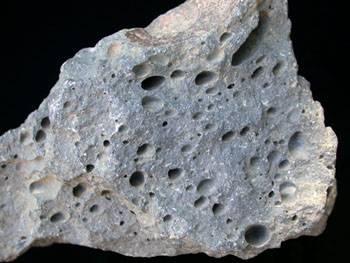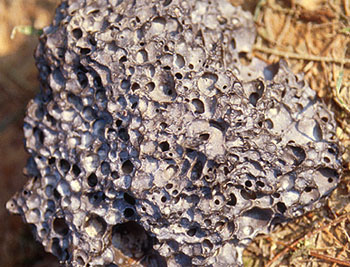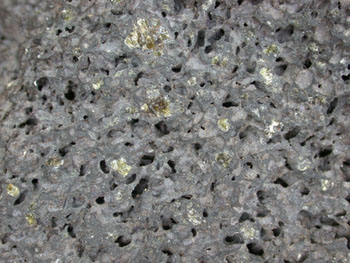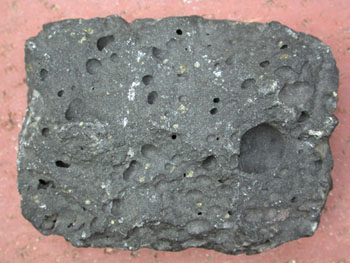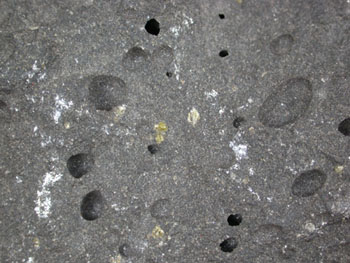Vesicular and Amygdaloidal Textures
| Vesicles are fossil bubbles. So, a rock that looks like Swiss cheese has a vesicular texture. Vesicles range in shape from spherical to elongated and in size from ~1mm to more than 1 cm. Basalts are most commonly vesicular.
The drop in pressure that a magma experiences as it flows from underground to the Earth's surface allows water and gases in the lava to form bubbles. If the bubbles do not get large enough to pop, they are frozen in the lava as vesicles. Amygdaloids are simply vesicles that have been filled in with a secondary mineral long after the flow cooled. Such secondary minerals are commonly white: quartz, calcite, or zeolite. (A secondary mineral is one that formed after the rock originally formed.)
|
|

